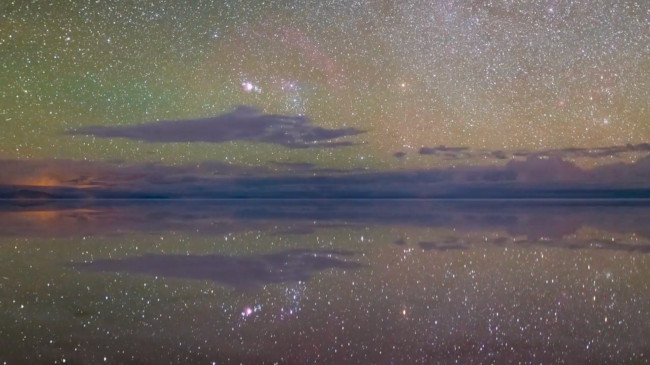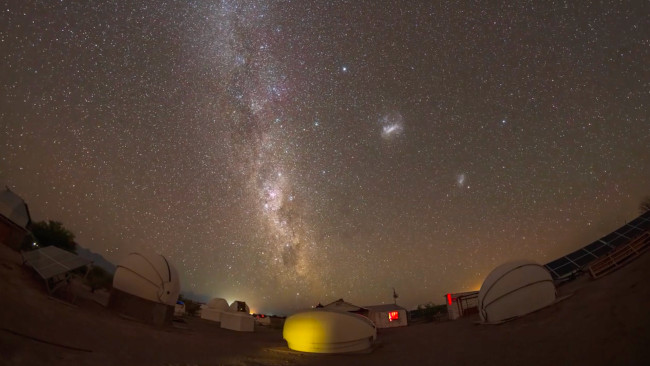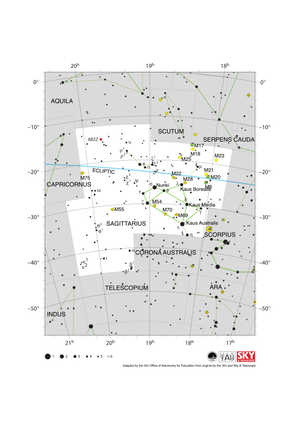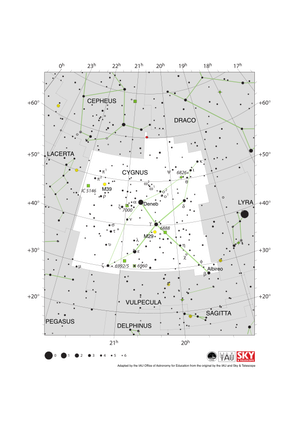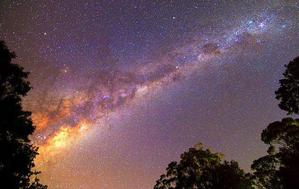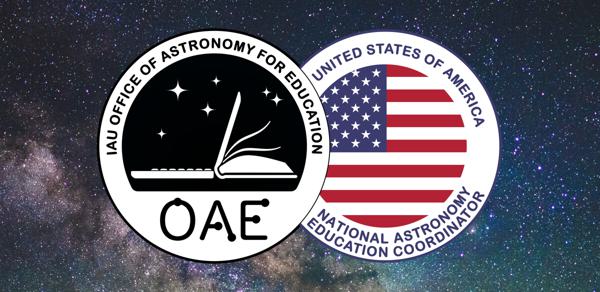Glossarbegriffe: Milchstraße
Description: Die Milchstraße ist die Galaxie, in der sich das Sonnensystem befindet. Sie enthält etwa 100-400 Milliarden Sterne. Das Sonnensystem befindet sich rund 26.600 Lichtjahre vom Zentrum der Milchstraße entfernt. Am Nachthimmel können wir die Milchstraße als zartes Band sehen, das sich über den Himmel erstreckt und dessen Zentrum im Sternbild Schütze liegt.
Die Milchstraße ist eine relativ große Balkenspiralgalaxie. Die meisten Sterne sind relativ gleichmäßig in der galaktischen Scheibe verteilt. Deren Durchmesser beträgt etwa 100.000 Lichtjahre und sie ist etwa 1000 Lichtjahre dick. Die galaktische Scheibe entstand vor 8-10 Milliarden Jahren.
Diese Scheibe ist von einem viel spärlicheren, kugelförmigen Halo aus Sternen umgeben, in dem sich auch Kugelsternhaufen befinden. Diese Kugelsternhaufen gehören mit einem Alter von etwa 12,5 Milliarden Jahren zu den ältesten Objekten in der Galaxis. Neben den Sternen besteht die Milchstraße aus dem Gas und Staub des interstellaren Mediums und aus Dunkler Materie. Während das interstellare Medium (ISM) größtenteils auf die Scheibe beschränkt ist, erstreckt sich der umgebende Halo aus Dunkler Materie über viel größere Entfernungen als der stellare Halo.
Das Zentrum der Milchstraße beherbergt ein supermassereiches Schwarzes Loch, dessen Masse über vier Millionen Mal so groß ist wie die Masse der Sonne. Um das galaktische Zentrum herum befindet sich eine Wölbung (Bulge) aus meist älteren Sternen, die in eine Richtung verlängert ist und so einen Balken bildet.
Zugehörige Glossarbegriffe:
- Dunkle Materie
- Galaktischer Bulge
- Galaktisches Zentrum
- Galaktische Scheibe
- Galaktischer Halo
- Galaxie
- Greenwich Mean Time (GMT)
- Sonnensystem
- Interstellares Medium
- Schütze
See this term in other languages
Term and definition status: The original definition of this term in English have been approved by a research astronomer and a teacher The translation of this term and its definition is still awaiting approval
The OAE Multilingual Glossary is a project of the IAU Office of Astronomy for Education (OAE) in collaboration with the IAU Office of Astronomy Outreach (OAO). The terms and definitions were chosen, written and reviewed by a collective effort from the OAE, the OAE Centers and Nodes, the OAE National Astronomy Education Coordinators (NAECs) and other volunteers. You can find a full list of credits here. All glossary terms and their definitions are released under a Creative Commons CC BY-4.0 license and should be credited to "IAU OAE".
If you notice a factual or translation error in this glossary term or definition then please get in touch.
Zugehörige Medien
Milky Way Arch over Lut Desert, Iran, by Amirreza Kamkar, Iran (Islamic Republic of)
Bildnachweis: Amirreza Kamkar/IAU OAE
License: CC-BY-4.0 Creative Commons Namensnennung 4.0 International (CC BY 4.0) icons
Sternbilder der Welt
Bildnachweis: Stephanie Ye Ziyi/IAU OAE
License: CC-BY-4.0 Creative Commons Namensnennung 4.0 International (CC BY 4.0) icons
Fließender Nachthimmel
Bildnachweis: Robert Barsa/IAU OAE
License: CC-BY-4.0 Creative Commons Namensnennung 4.0 International (CC BY 4.0) icons
Chilenische Nächte
Bildnachweis: Robert Barsa/IAU OAE
License: CC-BY-4.0 Creative Commons Namensnennung 4.0 International (CC BY 4.0) icons
Südsternhimmel
Bildnachweis: Jianfeng Dai/IAU OAE
License: CC-BY-4.0 Creative Commons Namensnennung 4.0 International (CC BY 4.0) icons
Related Diagrams
Sagittarius Constellation Map
Bildnachweis: Adapted by the IAU Office of Astronomy for Education from the original by IAU/Sky & Telescope
License: CC-BY-4.0 Creative Commons Namensnennung 4.0 International (CC BY 4.0) icons
Cygnus Constellation Map
Bildnachweis: Adapted by the IAU Office of Astronomy for Education from the original by the IAU and Sky & Telescope
License: CC-BY-4.0 Creative Commons Namensnennung 4.0 International (CC BY 4.0) icons
Triangulum Constellation Map
Bildnachweis: Adapted by the IAU Office of Astronomy for Education from the original by the IAU and Sky & Telescope
License: CC-BY-4.0 Creative Commons Namensnennung 4.0 International (CC BY 4.0) icons
Related Activities
Glitter Your Milky Way
astroEDU educational activity (links to astroEDU website) Description: Explore the Milky Way and characteristics of galaxies using glitter drawing.
License: CC-BY-4.0 Creative Commons Namensnennung 4.0 International (CC BY 4.0) icons
Tags:
Art
, Creativity
, Hands-on
, Handcraft
Age Ranges:
6-8
, 8-10
Education Level:
Middle School
, Primary
Areas of Learning:
Fine Art focussed
Costs:
Medium Cost
Group Size:
Group
Skills:
Communicating information
Living in the Milky Way
astroEDU educational activity (links to astroEDU website) Description: Build a model of the Milky Way to discover what our galaxy contains.
License: CC-BY-4.0 Creative Commons Namensnennung 4.0 International (CC BY 4.0) icons
Tags:
Hands-on
, Model
Age Ranges:
6-8
, 8-10
Education Level:
Primary
Areas of Learning:
Problem-solving
, Social Research
Costs:
Medium Cost
Duration:
1 hour 30 mins
Group Size:
Group
Skills:
Asking questions
, Communicating information
, Developing and using models

